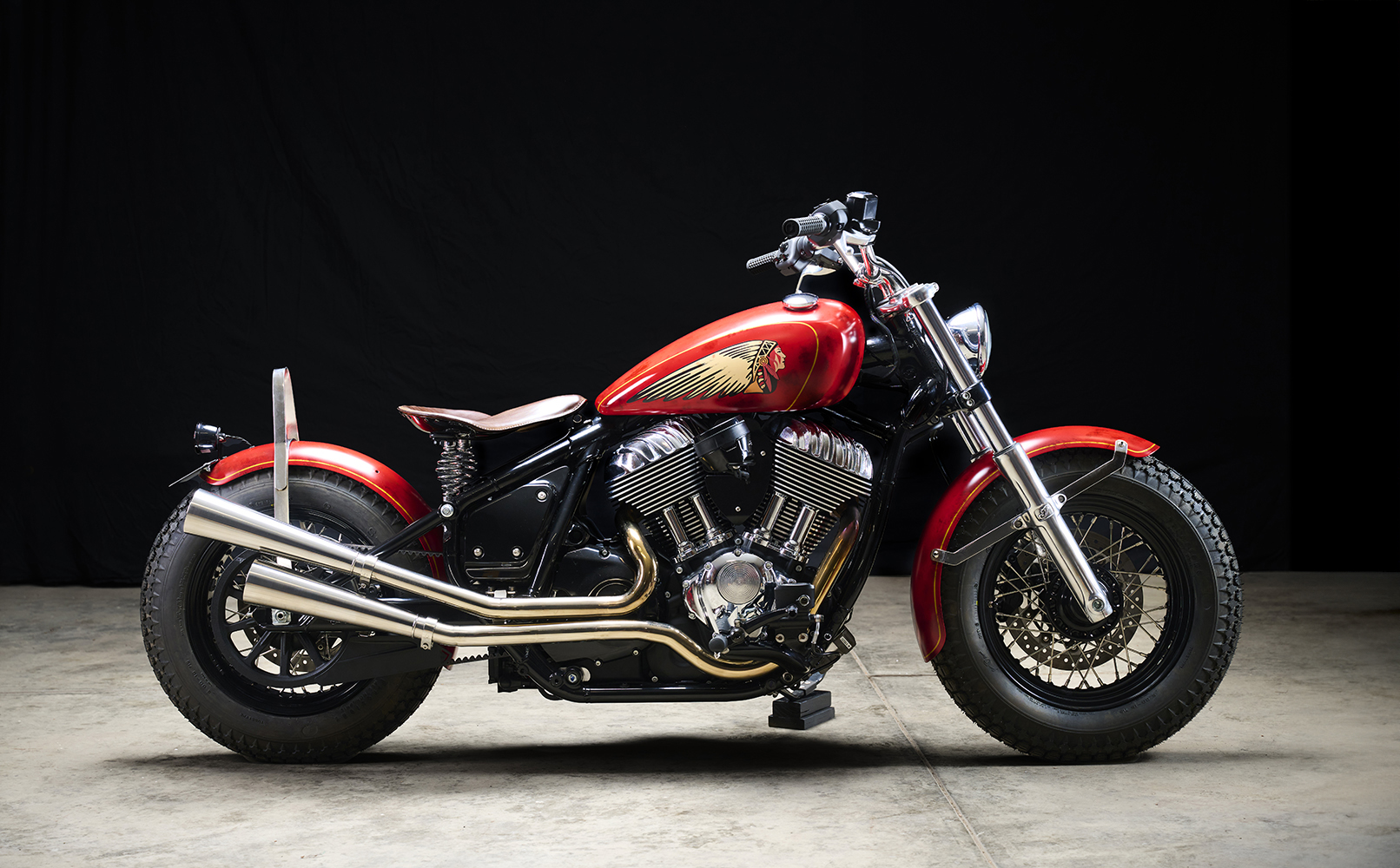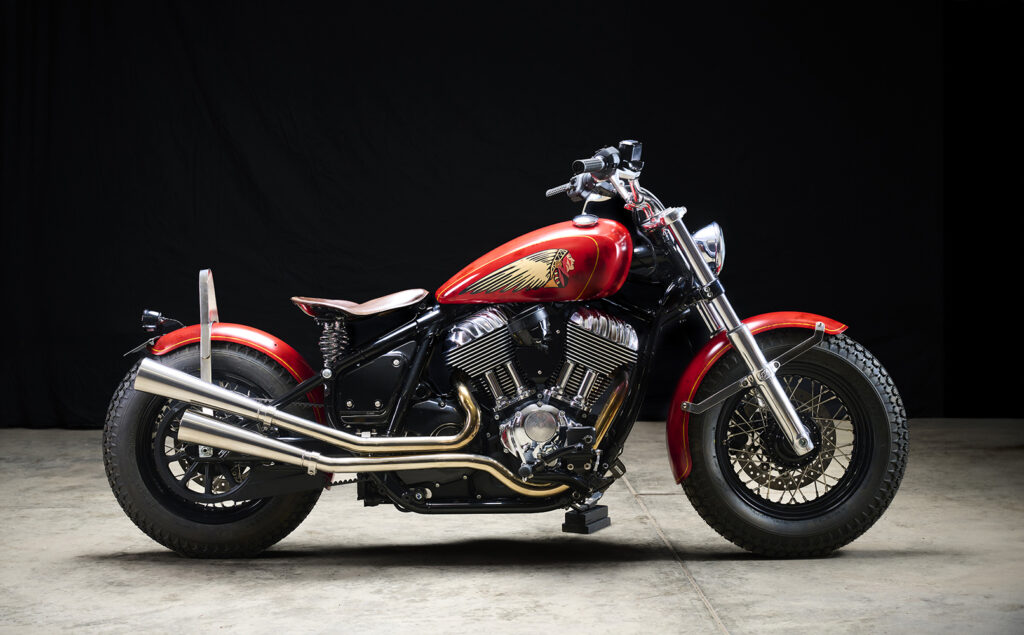
In the early decades of the American motorcycle industry, two companies, Indian and Harley-Davidson battled it out for the top spot, both on the race track and for maximum sales figures. But in the initial years after WW2, Indian lost its direction, management made costly errors and by 1953 the doors closed. It was an unprecedented fall from grace, and although small manufacturers tried to keep the brand alive, it wasn’t until industry powerhouse Polaris took over in recent times that the great Indian name was finally back at the top. The new machines are damn good, but at Sydney’s Sabotage Motorcycles, they really prefer to spin the spanners on classic gems. But with a little arm twisting, the owner of this 2022 Indian Super Chief got the guys to go back to the future and create this vintage vixen that really does combine the best of old and new.
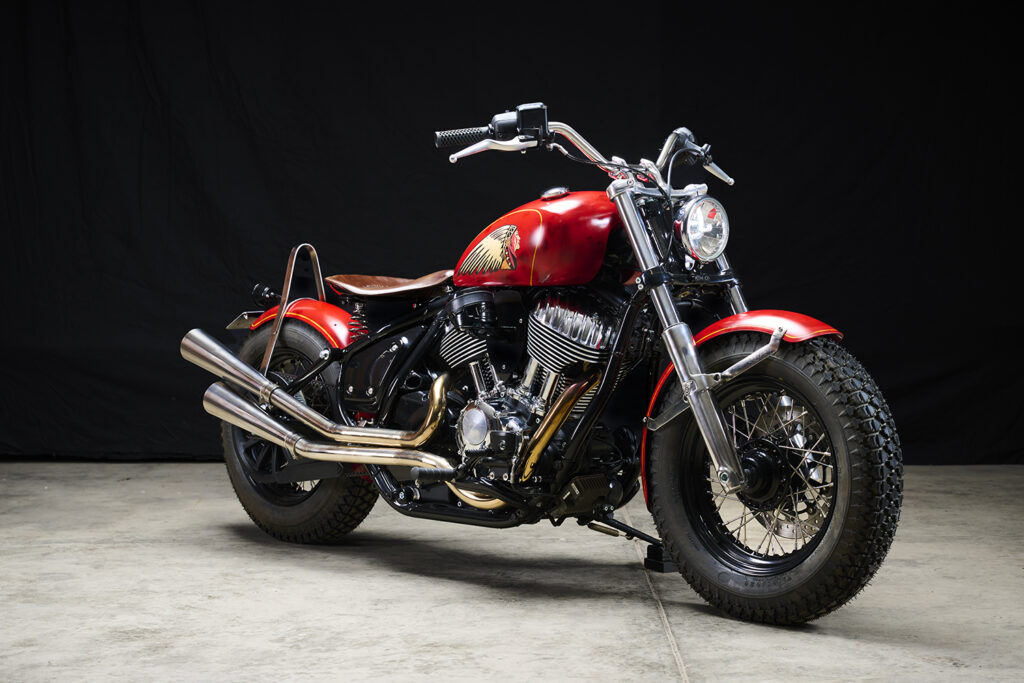
If you flick through the modern Indian catalogue, the standout models are still the Scout and Chief that gave them so much success a century ago. Add in the FTR that brilliantly pays homage to their flat/board track racing heritage and the big baggers for those who like to ride a two-wheeled lazy boy recliner, and it’s easy to see why sales are solid. It was moving away from these staples that cost the brand so dearly in the past, and now with some excellent engineering and design, they have to high tech to match the esteemed history. So, you can understand why one wise woman looked at a 2022 Super Chief, with its classic frame and thumping V-Twin engine and just had to have one.
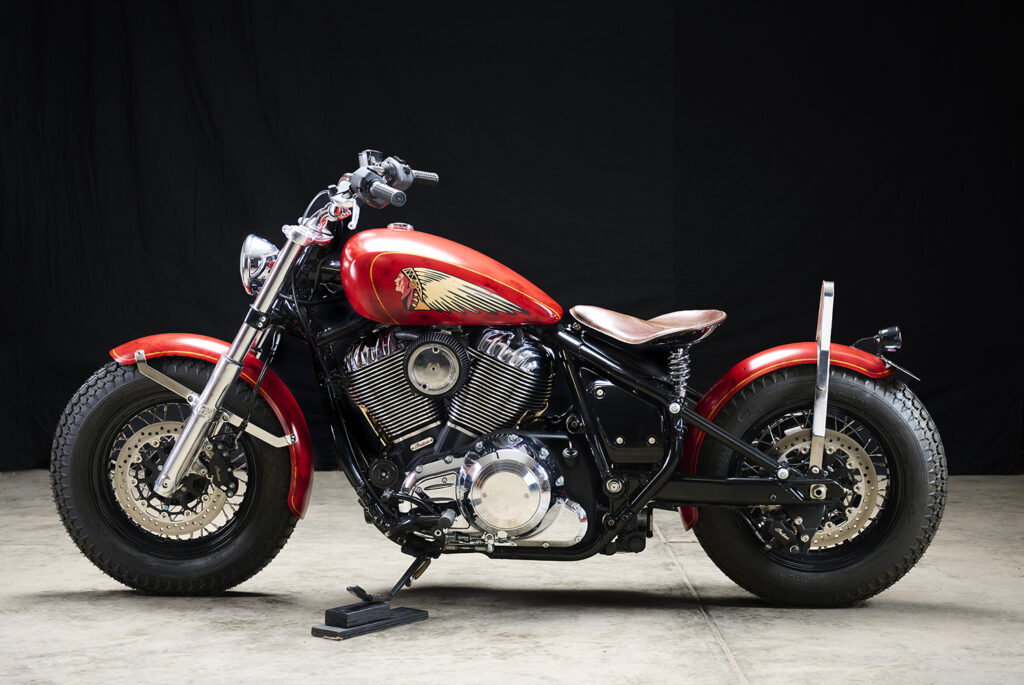
But, as Giles of Sabotage explains, “When we were approached by our client, she was already quite clear about what she wanted. The only hesitation on our part, was the base bike was to be a 2022 Indian Super Chief. Our passion and expertise is customising and restoring vintage motorcycles, so our initial reaction was turning our nose up at a brand new bike being rolled into the workshop.” But what turned those frowns upside down, was the owner’s willingness to trust the instinct of the team, and let them go to town, ripping the bike back to its basics, and then building up the sort of machine that combined the Indian vibe of the ’30s, with the modern tech that makes the bike such a marvel.
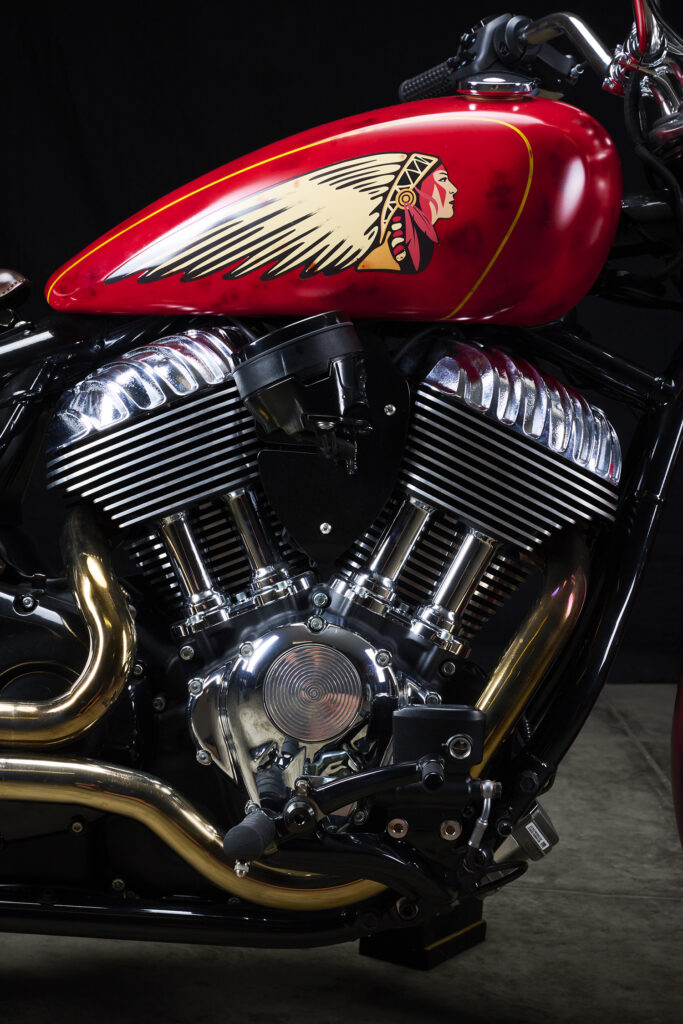
“Out of the factory, this thing is a hefty 340kgs, so it was in desperate need of a crash diet. We stripped off all the unnecessary moulded steel, over-engineered brackets, panniers, and cast iron subframe, and lots of other pointless bits of steel, which shed around 50-60kgs straight up,” Giles tells us. These changes not only ditch weight but allow you to finally see the tubular twin downtube frame and hulking engine in all their glory. But to really clean up the lines and go back to yesteryear, the guys ripped all the crap off the back of the bike and gave it a neat hardtail conversion. The solid struts don’t just mimic the chassis tubing, but take the perfect line back to their lower mounting point.
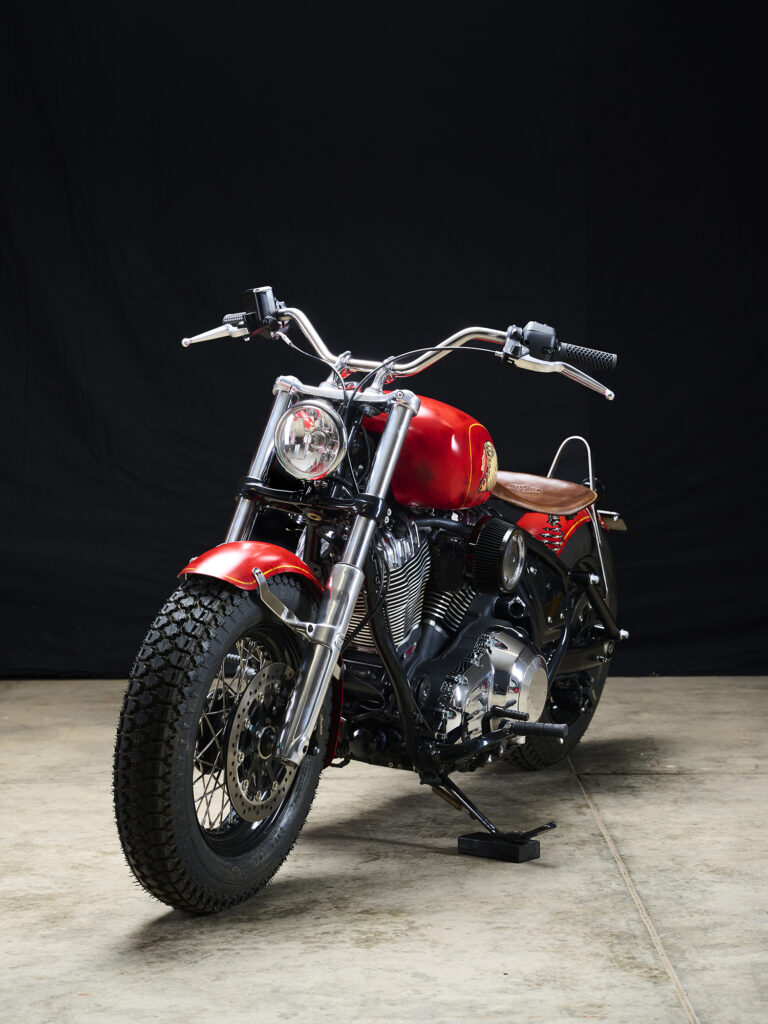
For the front end, more trimming and tidying up leaves the huge shrouds sitting on the floor ready for the scrap bin and reveals what are a really nice set of traditional forks. These have had the paint removed before being hand-polished to a mirror finish, and the simplicity truly stands out. To continue the theme of classic elegance, the guys changed the headlight out for a smaller 5.5-inch Posh unit and then bent up their own stainless steel bars. “We went through all sorts of weird and wonderful ideas to remove the bulky switches from the handlebars, but those things are complicated! Each one has a medley of electronics in it, like a mini-computer at each end of the handlebars.”
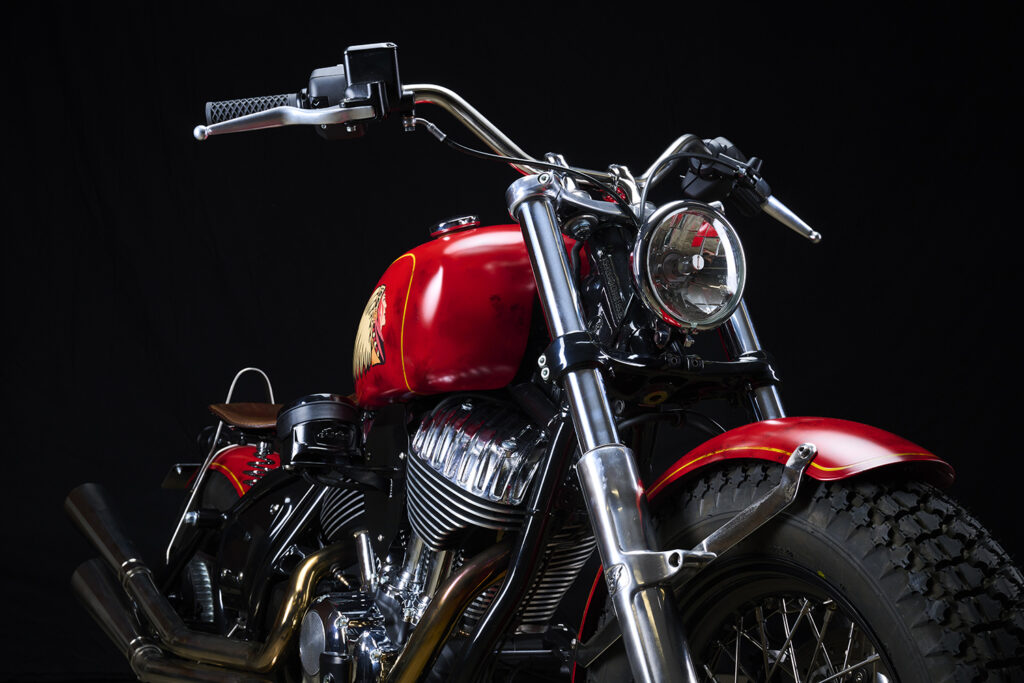
So, the switch gear would have to stay, they are after all not just for your lights and indicators, but control the ‘Ride Command’ system that delivers all of your sat/nav, Bluetooth music and other fancy goodies. All of which is brought to life on the touchscreen Speedo, which has been moved to a custom mount just in front of the rider’s knee. Now the big Indian was really turning back time, and to help this process along even further, the stock and rather large factory fenders were given the flick. In their place goes a beautiful set of hand-rolled items, both mounted using custom stainless fixings, with the rear rising up to act as a Sissy bar. A vintage taillight to match, and a simple number plate holder and things were looking good.
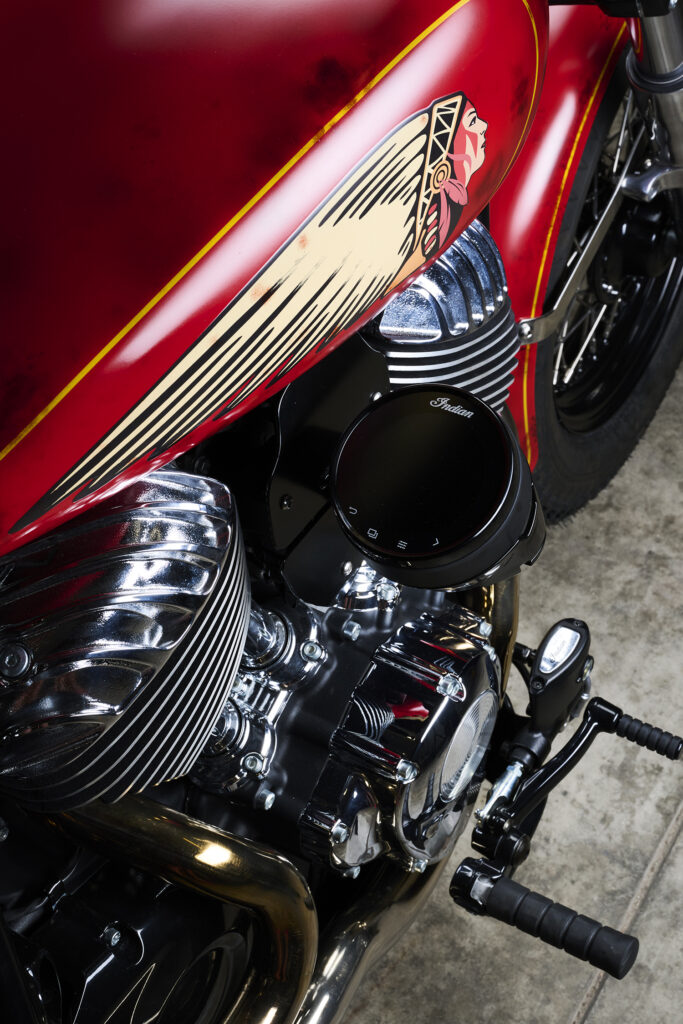
But to take it to the next level, the paint and graphics package had to be spot on, and Sabotage teamed up with some clever creatives. That vibrant Indian red paint was laid down by Cutting Edge in Sydney, who deliberately ‘aged’ the finish. “The Indian logo was redesigned by our mate Pablo, who cleverly reinterpreted the classic Indian logo with a nod to the fact that the owner of this bike is female.”
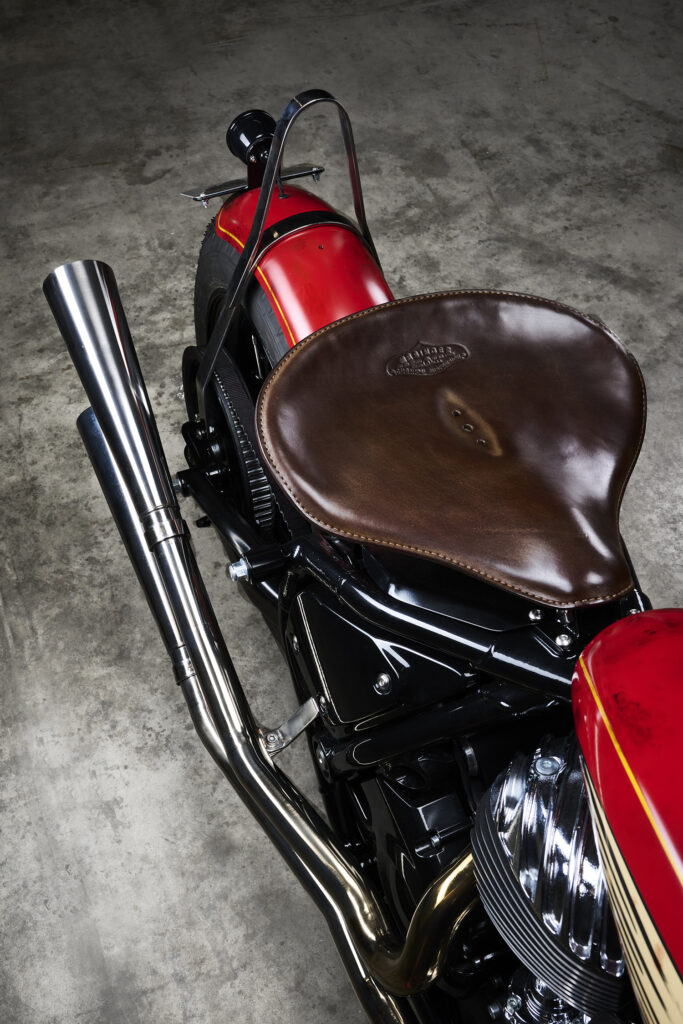
To complete the look, a true vintage-inspired seat was required, and the quality of the Mesinger piece is a work of art, providing the sort of large support that was popular in the ’20s. Having converted the bike to a hardtail, the chrome springs underneath now play a vital role in damping the ride.
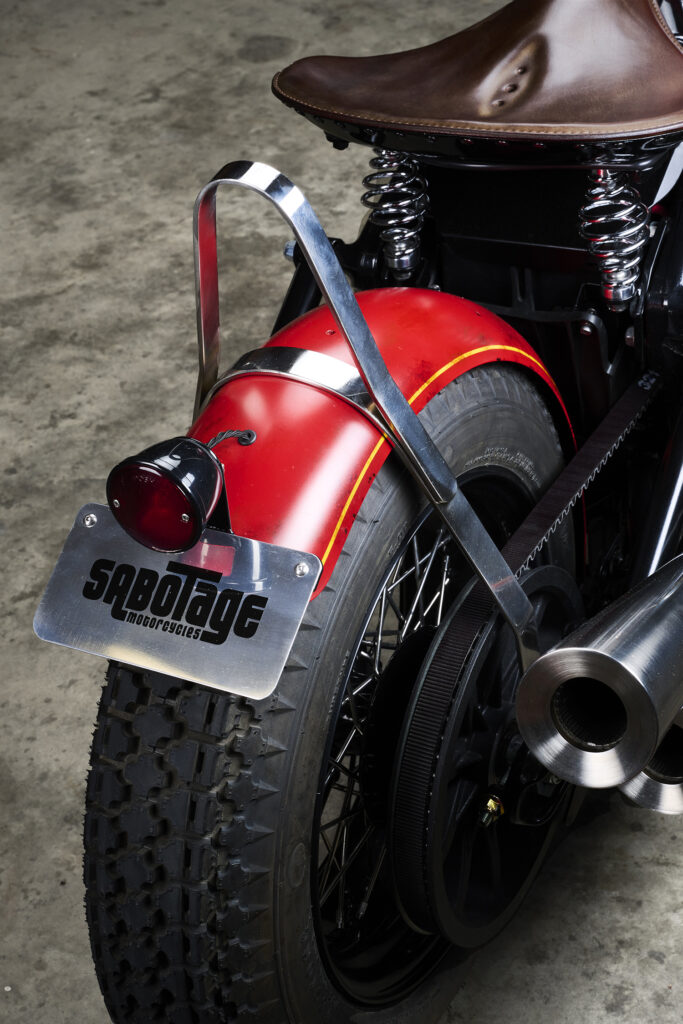
Of course, one of the big drawcards to any Indian is the engine and the Chief benefits from the best part of two litres of V-Twin American muscle. It pumps out 162nm of torque from the factory and yet is as smooth as silk thanks to the advanced fuel injection, which is now aided by an Arlen Ness stage 1 air cleaner. But to really hear the big girl thump, you need to ditch the factory pipes and the Sabotage guys have brilliantly fabricated a full stainless steel exhaust, with flowing lines and hand-rolled mufflers.
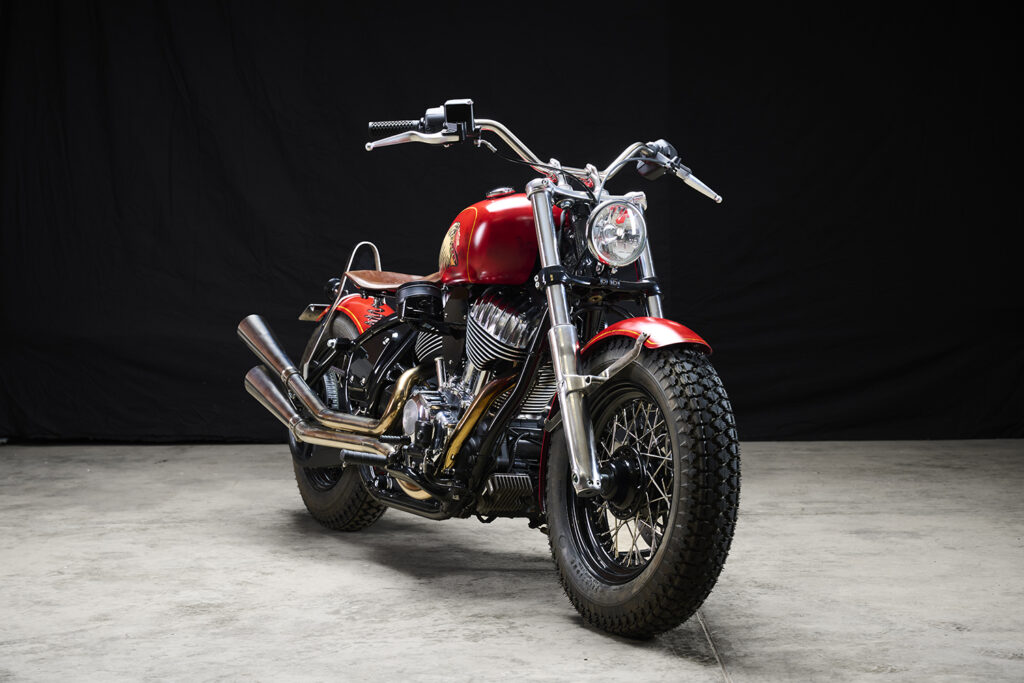
To finish out the build, Motogadget indicators hide away and “Firestone ANS tyres to complete the vintage Indian look, and to keep the hipsters happy,” Giles laughs. But it’s smiles all around, as one lucky lady rides off on another Sabotage special, a brilliant new Indian with endless classic charm.
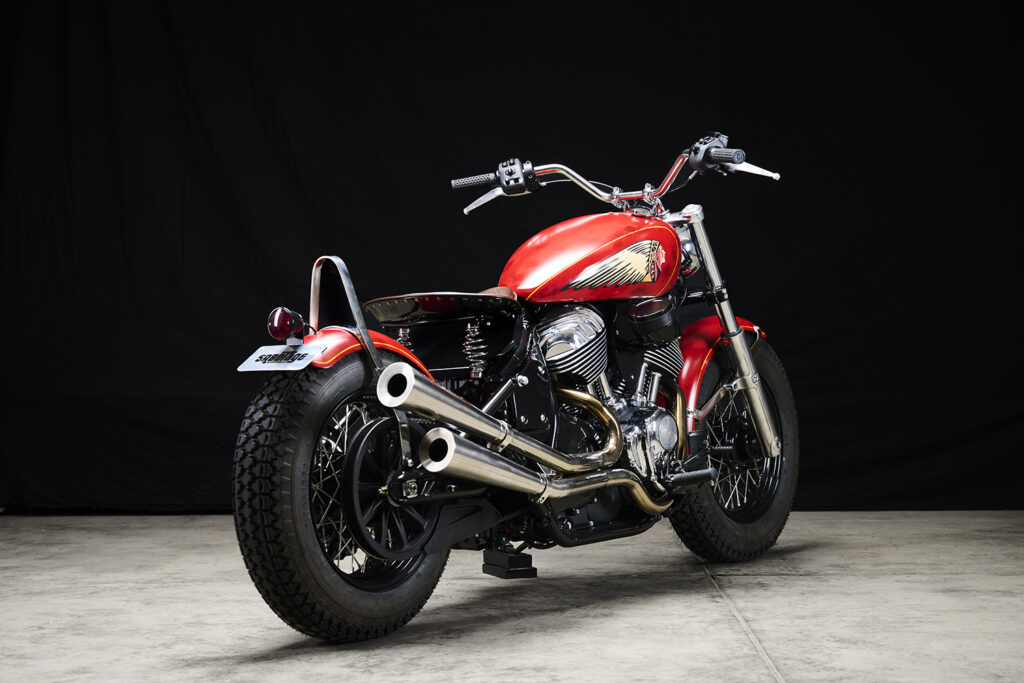
[ Sabotage Motorcycles | Photography by Nic Walker ]

